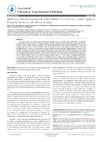Identificador persistente para citar o vincular este elemento:
https://accedacris.ulpgc.es/jspui/handle/10553/74665
| Campo DC | Valor | idioma |
|---|---|---|
| dc.contributor.author | Morchón, R. | en_US |
| dc.contributor.author | Bargues, M. D. | en_US |
| dc.contributor.author | Latorre-Estivalis, J. M. | en_US |
| dc.contributor.author | Pou-Barreto, C. | en_US |
| dc.contributor.author | Melero-Alcibar, R. | en_US |
| dc.contributor.author | Moreno, M. | en_US |
| dc.contributor.author | Valladares, B. | en_US |
| dc.contributor.author | Molina, R. | en_US |
| dc.contributor.author | Montoya Alonso, José Alberto | en_US |
| dc.contributor.author | Mas-Coma, S. | en_US |
| dc.contributor.author | Simón, F. | en_US |
| dc.date.accessioned | 2020-10-07T10:37:58Z | - |
| dc.date.available | 2020-10-07T10:37:58Z | - |
| dc.date.issued | 2011 | en_US |
| dc.identifier.issn | 2161-0681 | en_US |
| dc.identifier.uri | https://accedacris.ulpgc.es/handle/10553/74665 | - |
| dc.description.abstract | Dirofilaria immitis is the causal agent of heartworm diseases and of human pulmonary dirofilariosis. The infection is transmitted by several species of culicid mosquitoes that are frequently able to bite both animal reservoirs and humans. Canary Islands (Spain) constitute a well documented endemic area of canine dirofilariosis in which the mosquito species involved in the transmission of D. immitis are not known. The objectives of the present work were the identification of vectors of this parasite in Canary Islands and their molecular characterization. A total of 1219 female mosquitoes were captured. The most abundant species was Culex theileri (52.26%) followed by Cx. pipiens (35.44%), Anopheles cinereus hispaniola (6.23%), Culiseta longiareolata (5.74%), and Culex laticintus (0.33%). PCR was applied for the detection of larval D. immitis DNA in mosquitoes. D. immitis DNA was observed in the abdomen of one Cx. theileri female: 0.082% of the entire mosquito population and 0.17% in Cx. theileri. A molecular identification of Cx. theileri, the potential mosquito vector of dirofilariosis in this zoonotic focus in Canary Islands of Spain, has been made for first time based on sequences of the 18S rRNA gene, the second internal transcribed spacer (ITS2) of ribosomal DNA and the barcode region of the cytochrome c oxidase I (cox1) gene of mitochondrial DNA, allowing a broad mosquito molecular basis for future populations genetic analyses of this vector species. Parasitological and entomological molecular results suggest that Cx. theileri is a potential natural vector of D. immitis in Canary Islands. | en_US |
| dc.language | eng | en_US |
| dc.relation.ispartof | Journal of Clinical & Experimental Pathology | en_US |
| dc.source | Journal of Clinical & Experimental Pathology [ISSN 2161-0681], S3: 001 (2011) | en_US |
| dc.subject | 310907 Patología | en_US |
| dc.subject.other | Dirofilaria immitis | en_US |
| dc.subject.other | Culex theileri | en_US |
| dc.subject.other | Canary Islands | en_US |
| dc.subject.other | Spain | en_US |
| dc.subject.other | 18S rRNA gene | en_US |
| dc.subject.other | ITS-2 rDNA | en_US |
| dc.subject.other | Barcode region mtDNA | en_US |
| dc.title | Molecular characterization of Culex Theileri from Canary Islands, Spain, a potential vector of Dirofilaria Immitis | en_US |
| dc.type | info:eu-repo/semantics/article | en_US |
| dc.type | Article | en_US |
| dc.identifier.doi | 10.4172/2161-0681.S3-001 | en_US |
| dc.identifier.issue | S3 | - |
| dc.investigacion | Ciencias de la Salud | en_US |
| dc.type2 | Artículo | en_US |
| dc.utils.revision | Sí | en_US |
| dc.identifier.ulpgc | Sí | es |
| item.fulltext | Con texto completo | - |
| item.grantfulltext | open | - |
| crisitem.author.dept | GIR IUIBS: Medicina Veterinaria e Investigación Terapéutica | - |
| crisitem.author.dept | IU de Investigaciones Biomédicas y Sanitarias | - |
| crisitem.author.dept | Departamento de Patología Animal, Producción Animal, Bromatología y Tecnología de Los Alimentos | - |
| crisitem.author.orcid | 0000-0002-2683-7592 | - |
| crisitem.author.parentorg | IU de Investigaciones Biomédicas y Sanitarias | - |
| crisitem.author.fullName | Montoya Alonso, José Alberto | - |
| Colección: | Artículos | |
Visitas
293
actualizado el 12-jul-2025
Descargas
458
actualizado el 12-jul-2025
Google ScholarTM
Verifica
Altmetric
Comparte
Exporta metadatos
Los elementos en ULPGC accedaCRIS están protegidos por derechos de autor con todos los derechos reservados, a menos que se indique lo contrario.
